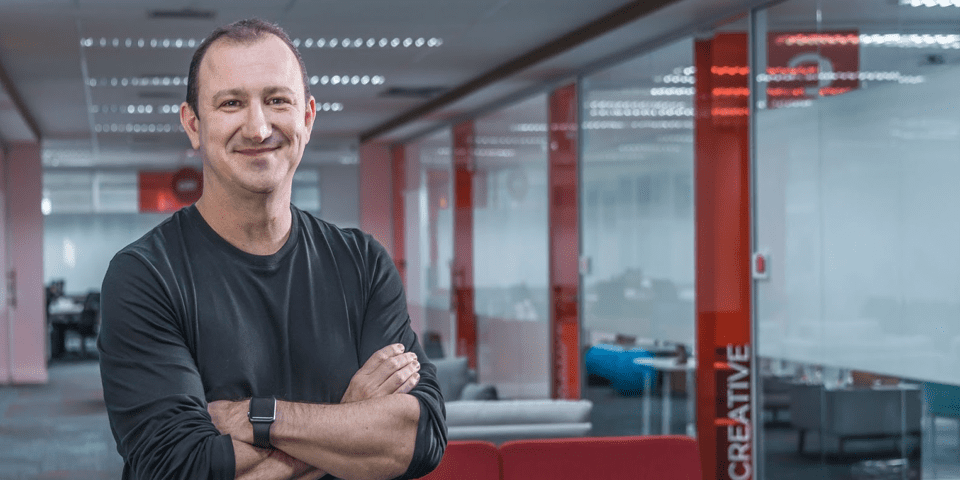
Beau Keyte on the challenges of bringing lean to services
INTERVIEW – With more and more organizations embracing lean services, it only makes sense to highlight the struggles and misconceptions they still encounter as they try to bring change about.
Interviewee: Beau Keyte, President, The Keyte Group
Planet Lean: What are the most common challenges that organizations face when trying to bring lean to the office and other service settings?
Beau Keyte: There are lots of challenges inherent to any lean transformation, but some do seem to be more evident in service environments. One of them is simply geography. Expanding the value stream to include customers and suppliers is a huge challenge anywhere (as Womack and Jones showed in their 2003 book Seeing the Whole Value Stream), but in an office setting it seems to impact the very core of the value stream: when we have different offices and functions around the globe, participating in the step-by-step improvement of processes becomes quite the undertaking. Time zones, logistical obstacles and travel costs get in the way of people working face to face to devise improvements for the organization.
Another big challenge is social, in that in the service arena our improvement efforts tend to be exclusively focused on people changing their mind and work, because there are no machines to improve or factories to transform. This amplifies the social aspect of lean, and all the difficulty to transform mindsets that come with it (no matter how many tools we might throw at it).
PL: Less and less people think that lean is only a “manufacturing thing,” but there are still instances. Why do you think they find it so hard to see lean thinking as something applicable to services?
BK: Part of it is certainly messaging: there is a natural pushback when an “expert” comes in from the other side of the building (or even outside the organization) and starts to throw manufacturing examples of why lean is great at a bunch of office workers. They will immediately reject the notion that lean can transform their workplace, wondering how the expert can help them when he or she knows nothing about their work and culture. And they will use those same manufacturing examples as leverage to tell you, “We don’t make cars here.” It’s important that we listen to people’s problems, meet organizations where they are, and use their language.
Of course, we need to inform people who haven’t experienced lean of what it is all about, but when it comes to showing examples we must pick the ones that create a curiosity to learn more. At the same time, I have seen extraordinary instances of people from different industries looking at manufacturing and being left inspired and full of ideas, but every time that happened, there was always a clear request from them to go visit a manufacturing firm. Listen to what your people need!
PL: You seem to be placing a lot of emphasis on communication. What is its role in a lean transformation?
BK: Like everything else, communication should be approached as an experiment. Sadly, very few companies communicate well. The main challenge is that communicating effectively means different things in different environments (even within the same organization): that’s why it’s helpful to apply PDCA to our way of talking and listening to people. If we commit to a continual effort to improve how we connect with them, we’ll eventually be able to engage their minds. Only then will feedback loops appear and will people be more interested in improving the work.
PL: You’ll be a speaker at the upcoming Lean Management Conference in Wroclaw, Poland. One of the things you’ll be talking about is migrating a lean transformation from cost reduction to strategic alignment. What can you tell us about this topic?
BK: I often see people high up in an organization talk about their lean transformations and using the number of kaizens that were run as a metric. They normally share a graph showing an exponential increase, with the correspondent cost cutting data charts, but nowhere in there will you find an indication of whether the overall business is actually being improved. It’s as if they believed that the more activity there is, the better the outcome of the transformation will be.
Talk to them, however, and you will find that those executives will often admit they don’t think their organization is aligned: the top level is just not getting through to the rest of the business to connect the strategy with the improvements necessary to support it. We should find a way to take the default concept of increasing the number of improvement events we run and turn it into the idea of doing the things that are good for the business. This takes a lot more thinking than just getting a consultant to come in and run kaizen events for you.
In Poland, I will take people through a thinking process that will challenge them on what’s important for their companies, what their goals are and how they are planning to achieve them. I will do this without going to the X matrix we find in policy deployment (a very good tool that unfortunately tends to overburden and confuse a lot of companies).
PL: In another session, you will also be discussing learning models. In your experience, what can an organization do to really learn continuously?
BK: To stick to the example of the number of kaizens metric, what I find is that executives tend to focus on the activity, maybe on the accumulated savings, but rarely on the learning resulting from the improvement. But how people learn should be our greatest concern if we want to transform our companies!
The model that I’ve found to be most successful now is one based on having a small team of people learn from the expert and then go out to teach and engage others, so that the expert is not tasked with teaching every single person in the firm. This is a collaborative learning model, and it’s where we give people the ability to learn a little piece at a time and each piece is then absorbed by them and the people they communicate and work with. The original team is now listening to and internalizing the different perspectives of the people around them as the redesign advances, making it more realistic and palatable to the entire organization. This type of learning – where you influence a few people and encourage them to go out to talk to, engage and work with others – is, in my opinion, the way to approach problem solving. I have seen amazing results when teachers get out of the way and allow the teams to spread the word themselves (and to struggle as they do). The results are great and more sustainable, and people learn more.
THE INTERVIEWEE

Read more


INTERVIEW - What does "leading through incompetence" mean? Peter Willats discusses the role of leadership in a lean management system and the evolution of lean thinking.


INTERVIEW – At last month’s Lean Digital Summit in Lisbon, César Gon told attendees how, with lean digital, we have an opportunity to finally get the attention of CEOs and business leaders.


FEATURE – The impact of humankind on the environment is now beyond dispute. Yet, too little is being done to adapt our business models. This compelling read explains why we need to create prosperity beyond profit.


FEATURE – To facilitate the transition to a new organization of the work in their department, a group of nurses at Erasmus Medical Center have been using Training Within Industry.

